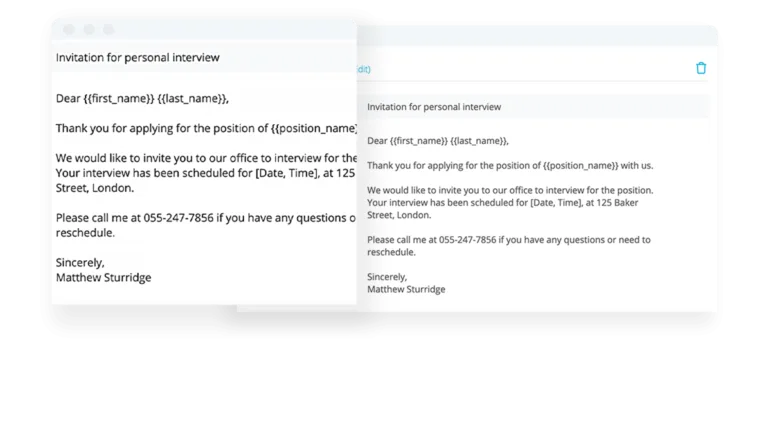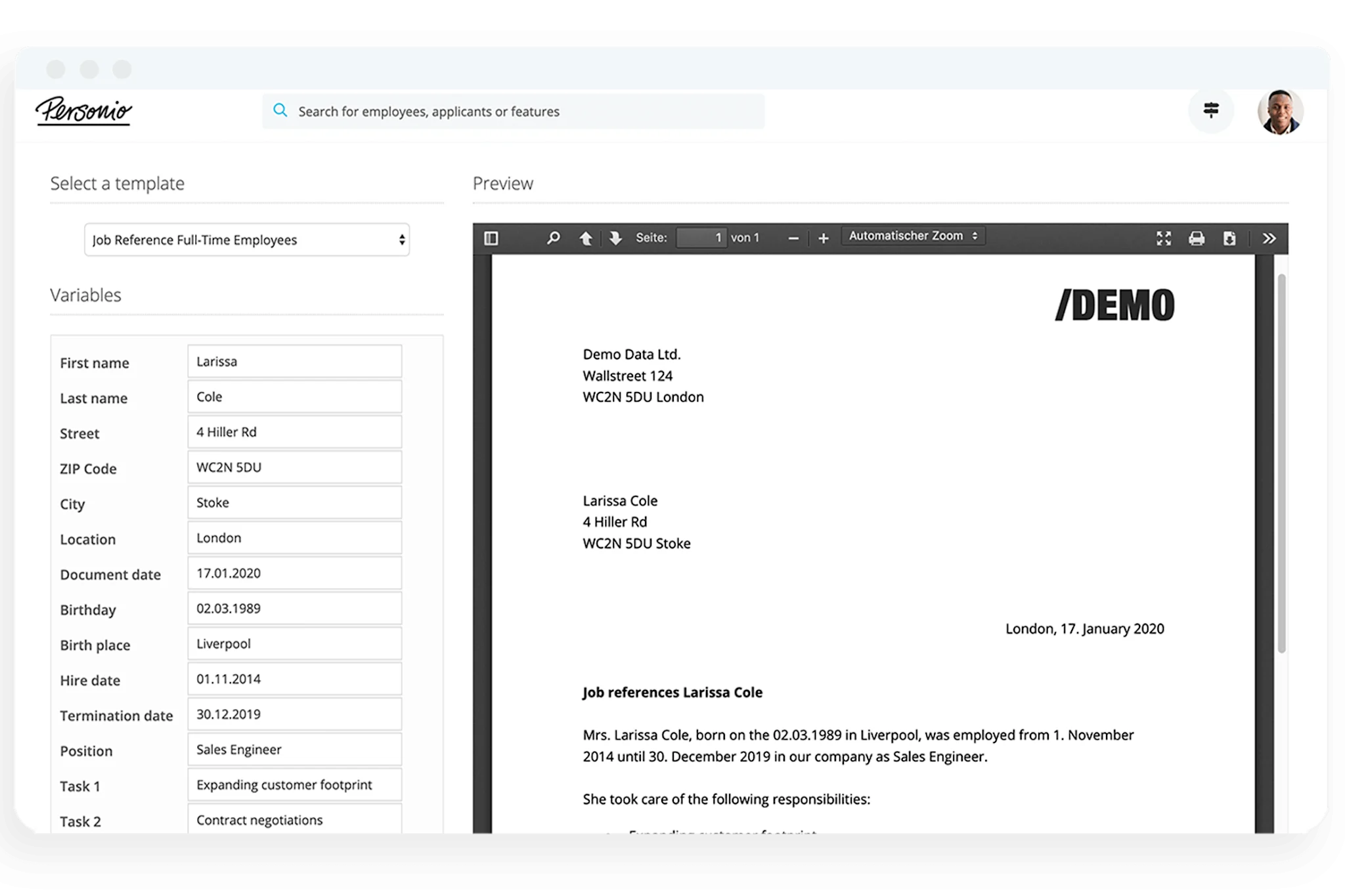What is a Health and Safety Management System?

A health and safety management system isn’t simply a nice-to-have for organisations in the UK, it’s a must. Companies are legally required to look after their employees – they have a duty of care to them. In this article, we’re covering all things health and safety for your team.
Ready to talk compliance? Personio is versed in all things data protection and compliance.Contents
- 1What Is a Health and Safety Management System?
- 2A Brief History of Health and Safety Management
- 3Do You Need Safety and Health Management?
- 4Why Is it Important to Have a Safety Management System?
- 5What are the Stages of a Health and Safety Management System?
- 6How Do You Implement a Health and Safety Management System?
- 7Are You Ready to Put More Systems in Place?
What Is a Health and Safety Management System?
A health and safety management system is a framework, set of guidelines or tool that helps those responsible manage health and safety in the workplace methodically. It’s also sometimes known as a safety management system and may include multiple policies and procedures designed to reduce accidents, incidents, illness and danger to employees.
A Brief History of Health and Safety Management
A report by the HSE states that in 2020/21, an estimated 1.7 million workers in Great Britain were suffering from an illness that they believed was caused or made worse by work. Interestingly, the nature of injuries has changed over time.
For example, as the incidence of musculoskeletal disorders has declined since the 1990s, stress, depression and anxiety have skyrocketed.
When you put current illness into a historical context, workers today have an easy time of it. But In 2020/21, 142 workers were still killed at work in Great Britain including 88 employees and 54 self-employed workers. That’s not good enough.
Any preventable employee death is unforgivable. And that alone is why it’s worth having a health and safety management system in place.
Health and Safety Management System Examples
What should you include in your health and safety management system? There’s no exhaustive list of things that must be included, but be sure to cover some of the following:
Risk assessments
Hazards in the workplace
Accidents and incidents
Safety training
To guide the creation of a formal health and safety management system, you probably want to take a look at standards that already exist. For example, ISO 45001:2018 specifies requirements for an occupational health and safety (OH&S) management system so that companies can provide safe and healthy workplaces by preventing illness and injury, and by improving OH&S.
You might also want to consider looking at ISO 9001:2015. This standard relates to the requirements for a quality management system which is designed to meet regulatory requirements while improving customer satisfaction.
If your company has been in business for any significant length of time you’ll probably have standards, procedures, processes or codes that you already use. If these relate to an individual’s safety or health, include them in your system, too.
Depending on which sector your company operates in, there may also be relevant frameworks that must be included in your S&H management system. For example, if you’re in the transport industry you might want to consider legislation relating to vehicles at work, driver competence and driver recruitment. Knowledge workers might need to think about human factors such as training and competence including general advice on successful health and safety management, HSG65 (1997).
H&S guidelines can also be very industry-specific, like their guidance on the selection and training of offshore installation managers for crisis management or the nuclear directorate technical assessment guide.
Do You Need Safety and Health Management?
In a word, yes. It’s the right thing to do. Officially, though, a formal management system is not required by law.
There are legal reasons for having health and safety management systems. People have the basic human right to be safe at work, and it’s important to manage this effectively. There’s also a moral obligation to take care of your employees.
But what does health and safety law actually require? A short guide to health and safety regulation by the HSE says that while the act is important, these duties are qualified in the Act by the principle of ‘so far as is reasonably practicable’. In other words, they explain, “an employer does not have to take measures to avoid or reduce the risk if they are technically impossible or if the time, trouble or cost of the measures would be grossly disproportionate to the risk.”
Officially, the act says, “‘…it shall be the duty of every employer to prepare and as often as may be appropriate revise a written statement of his general policy with respect to the health and safety at work of his employees and the organisation and arrangements for the time being in force for carrying out that policy, and to bring the statement and any revision of it to the notice of all of his employees…”
Why Is it Important to Have a Safety Management System?
A health and safety management system will help you identify risks and hazards in the workplace and work towards preventing incidents in future.
If they do occur, a system will also help you know how to respond appropriately, how to report and track incidents and how to work towards preventing future incidents from taking place by considering what went wrong and ensuring it doesn’t happen again.
In today’s knowledge economy where many businesses succeed or fail on the way they treat their employees, a safety management system can also help you promote a positive health and safety culture which is an important aspect of a positive workplace and corporate culture.
If relevant or appropriate, your safety management system can also include references to other policies or guidance you have in place relating to mental health at work, occupational health and stress leave. You might also want to consider referring to issues like absenteeism or bullying at work.
What are the Stages of a Health and Safety Management System?
A good health and safety management system should be set up as best as possible, depending on the size of your business. If you’re a small company, you might not need an onerous or formal framework. But larger companies do need a formalised and comprehensive management system.
Regardless of your size, though, you do need to make sure that safety and health management systems are put in place, monitored, maintained and improved over time. These are the four stages of any health and safety management system:
Prepare and plan – Make sure you know who does what, when and how when it comes to health and safety arrangements, monitoring performance and emergency response planning.
Organise or make things happen – Put the plan into action. Make sure people have the resources they need. Share information about health and safety with the relevant people and get advice, if required.
Check things – Is your health and safety plan working? At this stage, you must do inspections and audits, investigate incidents or accidents (as well as near misses) and keep an eye out for new hazards.
Take action – Make sure your records are accurate and the systems are suitable and sufficient. If they aren’t, then you’ll need to make changes in line with industry standards and best practice.
Or, in short:
Plan
Do
Act
Check
Regardless of how you follow these four steps, the key elements of a successful H&S program include getting buy-in from management and commitment from employees.
It’s also important to make sure you have done an appropriate workplace analysis, considered how to prevent or control existing and new hazards, and ensured that employees, supervisors and managers are appropriately trained.
How Do You Implement a Health and Safety Management System?
Once you’ve created a system, it’s time to set it up. Start by looking at the risks facing your employees, how likely they are to happen and how disruptive any incidents might be.
Then it’s time to look at the costs (financial, human and other) and look at how well you can manage these risks.
To make sure your business is organised and capable of taking care of your employees’ health and safety you need to have the right controls in place, make people aware of the need to cooperate and communicate and be confident that they are capable of doing their work safely.
Are You Ready to Put More Systems in Place?
If you’re at the stage where you need more formal processes and systems (not just Health and Safety Management Systems) but don’t have the time to handle it all, it might be time to talk to Personio about HR systems.
Speak with an expert today to learn more about what this could mean for your business, both in terms of saving your team time while allowing productivity to skyrocket.


